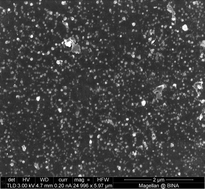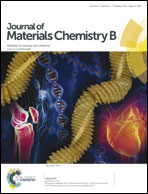Antibiotic nanoparticles embedded into the Parylene C layer as a new method to prevent medical device-associated infections
Abstract
Tetracycline nanoparticles (NPs) were synthesized and simultaneously deposited on Parylene-C coated glass slides using ultrasound irradiation. The optimization of the process conditions, the specific reagent ratio and the precursor concentration resulted in the formation of uniform NPs with an average size of ∼50 nm. These novel tetracycline NP coated-surfaces were tested against two common bacterial pathogens, Escherichia coli and Staphylococcus aureus, and were found to be extremely potent against both bacteria, suggesting that these antibiotic NPs provide the Parylene surface with self-sterilizing properties. Finally, the mechanism describing the formation of tetracycline NPs and their subsequent deposition on the Parylene C surface is presented.


 Please wait while we load your content...
Please wait while we load your content...